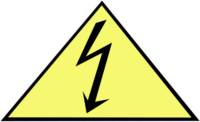Matching safety and compliance training to industry, employees to training and figuring out the right training frequency, is a challenge for many organizations, and tracking all that is perhaps more difficult still.
Because of the wide variety of training requirements and logistical problems, administering safety training has always been seen as a major headache for employers. That’s understandable, considering that different kinds of training are required for different employee groups, at various locations, and with restrictions on employee time and availability.
Here, we’re going to make it a little easier for folks to get a handle on workforce training standards, and answer some oft-asked questions.
Basic categories of workforce training
Generally, safety training is required for new employees and must also be done when current employees or contractors under the control of the company are newly assigned to a job where specific hazards exist. Safety training is also required when the hazards of the job change. Additionally, some types of training require periodic updating.
Annual refresher training is the widely accepted best practice for occupational safety training topics.
OSHA-required training for most workplaces
Training in this category is almost universally required, affecting a majority of general industry employment settings. Some training examples include Emergency Response, Fire Extinguisher, and Hazard Communication; OSHA has laws requiring training for each of those examples.
OSHA-required training for many workplaces
This training category relates to many employment settings, yet are more pertinent for mid-to-high risk employment categories, as opposed to general industry. Training examples include First Aid & CPR, Compressed Gases, and Personal Fall Arrest Systems.
OSHA-required training for certain industries or specific types of work
This training category relates to specific work hazards not commonly present in low-risk working environments. If workers run the risk of exposure to asbestos, and certain chemical hazards, for example, then there is a specific OSHA law mandating training on that subject, and employers are obligated to provide such training.
Best practice training
Best practice training is driven by the overarching goal of lowering injury and illness rates. It sounds optional, but OSHA has been known to invoke the agency’s General Clause and state-specific laws to cite employers who don’t go far enough in providing training for these recognized hazards. Training examples include Ladder Safety, Industrial Ergonomics, and Flammable Liquid Safety.
Federal vs. state jurisdiction
All states have the option of either participating in the federal regulatory system, or running a state-specific OSHA program. In some states, this choice creates two layers of occupational safety regulation. To make things more confusing, some states have a “hybrid” approach, like the state of Tennessee, which has a state OSHA program with jurisdiction over general industry and construction operations, but cedes jurisdiction over the maritime industry to the federal government.
Some state OSHA programs have standards that are identical to federal OSHA standards, while others have standards that are slightly different, and a few, like California’s Cal-OSHA and Michigan’s MI-OSHA, have standards that are significantly different.
In addition, if an employer recognizes a hazard beyond state and federal OSHA standards that employee training would help mitigate, the employer is responsible for protecting its employees, developing safeguards and providing the necessary training.
Employers under state OSHA plans often receive a citation because they have the federal OSHA workplace poster displayed in their workplace, and not the poster from the state OSHA program.
Small businesses must provide safety training
There is a general misconception that small employers are exempt from OSHA standards. While OSHA generally will not conduct an inspection at a company with fewer than ten employees, that company is not exempted from OSHA regulation. Small employers must still comply with all OSHA rules and regulations that apply to their workplace, and companies are also subjected to OSHA inspections in certain situations, such as when an employee complaint is filed, a serious injury occurs, or when a fatality happens on the job.
In certain cases, a small business may be exempt from implementing specific OSHA standards, like those requiring an OSHA injury/illness log, or development of a written emergency action plan, but those companies must still provide hazard-specific occupational safety training.
Some exemptions to OSHA training requirements include sole proprietorships, or where family members work on family farms.
Employee groups covered by other federal agencies
OSHA training requirements can be industry specific, workplace specific and/or hazard specific. Training requirements for both the private and public sector are driven by specific industry standards pertaining to general industry, construction, maritime, aviation, agriculture, and so on. Mining, for example, is regulated by the Mine Safety and Health Administration or MSHA.
There are other work situations where different regulations take precedence over OSHA standards, as with workers on ships at sea, flight crews in airplanes, and truck drivers rolling down the highway.
OSHA requires that companies provide safety training to its employees based on exposure to hazards. Exposure, or the expected likelihood of exposure, is the key to determining if training in hazard recognition, safe practices, and use of special procedures or equipment, is necessary for the protection of employees.
To determine which training is required, companies should conduct a hazard assessment for all aspects of operations, from facilities and equipment, to work procedures, processes, byproducts, and even hazard exposure related to independent contractors, whose work can affect employees.
Effective recordkeeping
Employers must keep a record of all safety training, as records provide evidence of the employer’s adherence to OSHA standards. Documentation can also supply an answer to one of the first questions an accident investigator will ask: “Was the injured employee trained to do the job?”
Training: Return on investment
“Every day in America, 12 people go to work and never come home. Every year in America, 3.3 million people suffer a workplace injury from which they may never recover. These are preventable tragedies that disable our workers, devastate our families, and damage our economy.” – Former Secretary of Labor Hilda Solis
Training in the proper performance of a job is time and money well spent, and employers do see a return on that investment. An effective program of safety training for workers can result in fewer injuries and illnesses, better morale, and lower insurance premiums.
Workforce safety training saves lives, and helps prevent preventable accidents.


